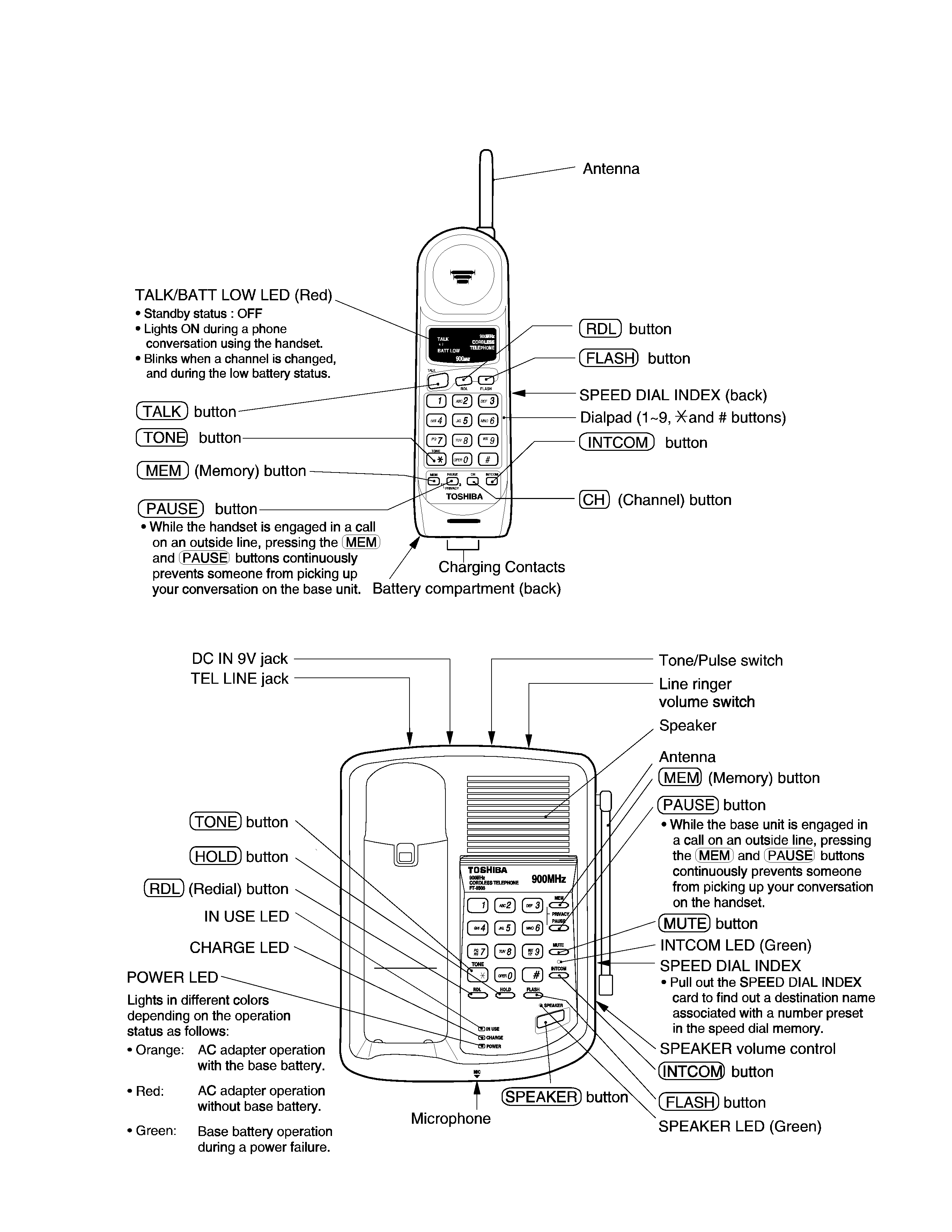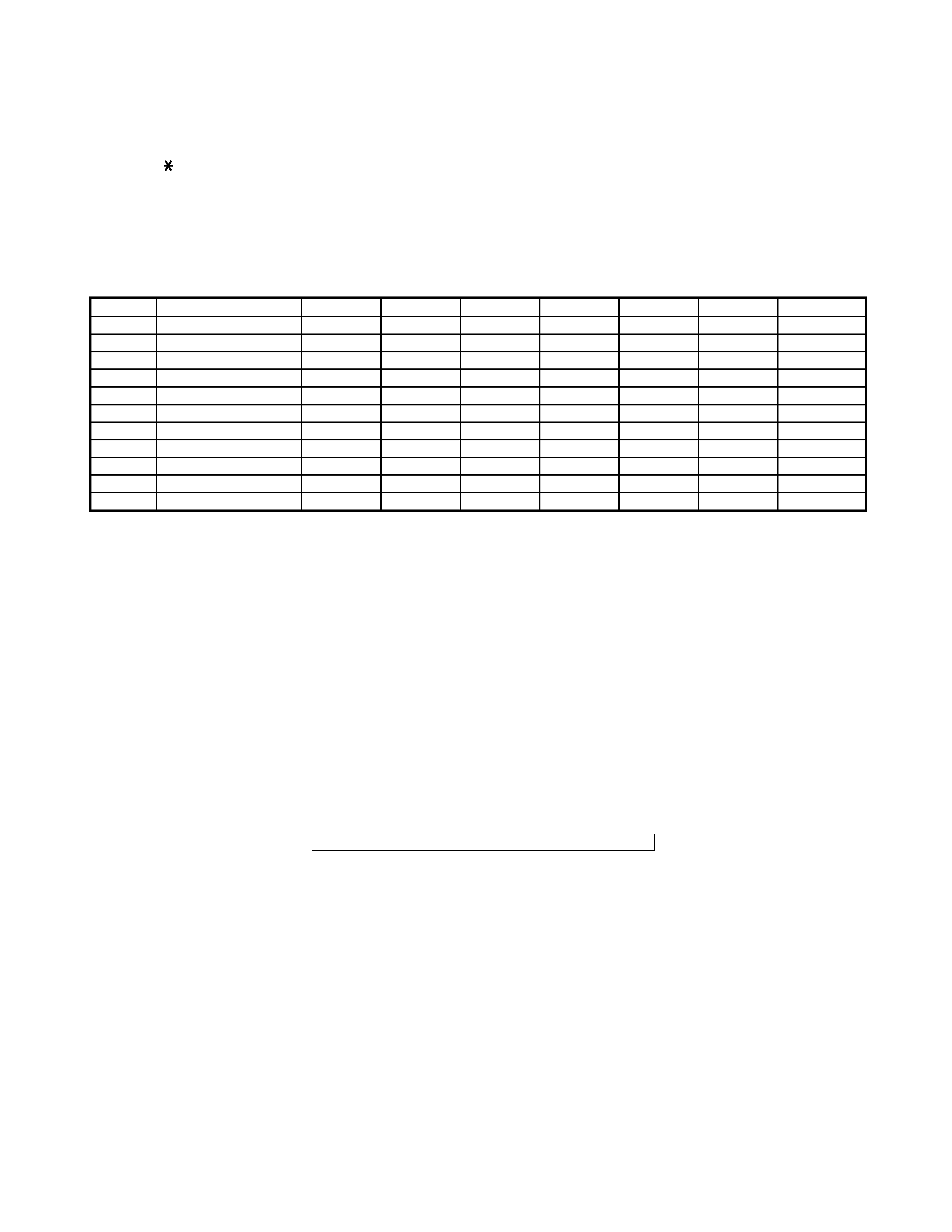
SERVICE MANUAL
PUBLISHED IN JAPAN, Jun., 1998
FILE NO. 2B0-9804
FT-8508
CORDLESS TELEPHONE

-- 1 --
CONTENTS
SAFETY PRECAUTIONS ................................................................................................................... 1
OPERATING CONTROLS .................................................................................................................. 2
ALIGNMENT PROCEDURE ............................................................................................................... 3
BLOCK DIAGRAMS ........................................................................................................................... 9
SCHEMATIC DIAGRAMS ................................................................................................................ 14
TROUBLESHOOTING HINTS .......................................................................................................... 24
IC AND TRANSISTOR VOLTAGE CHART ....................................................................................... 31
SEMICONDUCTOR LEAD IDENTIFICATION .................................................................................. 36
ELECTRICAL PARTS LOCATION .................................................................................................... 41
WIRING DIAGRAMS ........................................................................................................................ 46
EXPLODED VIEW AND MECHANICAL PARTS LIST ...................................................................... 48
PARTS LIST ..................................................................................................................................... 52
ASSEMBLY PARTS LIST ................................................................................................................. 71
SPECIFICATIONS ............................................................................................................................ 72
SAFETY PRECAUTIONS
Before returning any models to the customer, a safety check of the entire instrument should be made.
The service technician must be sure that no protective device built into the instrument by the manufacturer
has become defective or inadvertently degraded during servicing.
1. WARNING:
Alterations of the design or circuitry of these models should not be made.
Any design changes or additions such as, but not limited to, circuit modifications, auxiliary speaker
jacks, switches, grounding, active or passive circuitry, etc. may alter the safety characteristics of these
models and potentially create a hazardous situation for the user.
Any design alterations or additions will void the manufacturer's warranty and will further relieve the
manufacturer of responsibility for personal injury or property damage resulting therefrom.
2. PRODUCT SAFETY NOTICE
Many electrical and mechanical parts in this chassis have special characteristics. These characteristics
often pass unnoticed and the protection afforded by them cannot necessarily be obtained by using
replacement components rated for higher voltage, wattage, etc. Replacement parts that have these
special safety characteristics are identified in this manual and its supplements; electrical components
having such features are identified by a
in the schematic diagram and the parts list. Before replacing
any of these components, read the parts list in this manual carefully. The use of substitute replacement
parts that do not have the same safety characteristics as specified in the parts list may create shock, fire
or other hazards.

-- 2 --
OPERATING CONTROLS
BASE UNIT CONTROLS
HANDSET CONTROLS
RS
YZ
1
2

-- 3 --
ALIGNMENT PROCEDURE
Test Mode For Base Unit
Press the " " and "#" keys at the same time about 1.5 seconds while turning the power on, the confirmation beep
will sound to indicate that the unit is in the test mode.
1. To change the TEST mode: Press the number key for the corresponding TEST mode.
(Refer to the following table)
2. To change channel:
Press the "RDL" key, but if changing the step, the channel returns to the start
channel.
3. To cancel Test mode:
Bell rings, charge the Handset or Power off.
*1 : "0000..." (250Hz) will be fed out continuously as transmitting data.
*2 : Bell rings when sensing SQ.
*3 : Every pushing of FLASH key makes tone change.(In the case of Dual Tone, changes as 1
2 3 4 5
6 7 8 9 0 * # 1.)
DTMF Frequency
ROW1
:
697
ROW2
:
770
ROW3
:
852
ROW4
:
941
COL1
:
1209
COL2
:
1336
COL3
:
1477
*4 : Bell rings when the received data are "0000..." (250Hz).
*5 : Charge LED lights when detecting Charge ON.
Channel rotation
19
20 21 40 1 2 3 4 5 . . . . . . . . 37 38 39 40
STEP
FUNCTION
KEY
START CH
TX CONT
TX MUTE
RX MUTE
RL CONT
REMARKS
1
VCO/TX FRQ. ADJ
1
19
L
L
L
L
2
TX MODE CHECK
2
19
L
H
L
H
3
TX DATA
3
19
L
LLL
*1
4
RX SENS.
4
19
H
L
H
H
5
SQ SENS.
5
19
L
L
H/L
H
*2
6
RING CHECK
6
19
H
L
L
L
7
DUAL TONE CHECK
7
19
H
L
L
H
*3
8
DATA IN CHECK
8
19
L
L
L
H
*4
9
CHANNEL DATA CHECK
9
19
H
LLL
*5
10
DUPLEX
0
19
L
H
H
H
11
INT' COM
MEM
19
L
H
H
L

-- 4 --
Test Mode For Handset Unit
To perform the TEST mode, turn the power ON by pressing the " " and "#" buttons at the same time.
When entered the TEST mode, the bell rings and the unit enters TEST mode 1 . ( Refer to the following table. )
1. To change the TEST mode: Press the number key for the corresponding TEST mode.
(Refer to the following table)
2. To change channel:
Press "CH" key.
( Note: If the step is changed, the channel returns to the start channel. )
3. To cancel the TEST mode:
Turn the power OFF, charge the Handset, or press the "TALK" key.
STEP
FUNCTION
KEY
START CH TX CONT
SC
TX MUTE RX MUTE
CONV
REMARKS
1
VCO/TX FREQ. ADJ
1
21
L
H
H
L
H
2
TX MOD. CHECK
2
21
L
H
L
L
L
3TX DATA
3
21
L
H
L
L
L
*1
4
RX SENS
4
21
H
H
L
H
L
5
SQ SENS
5
21
LH
L*A
L
6
RECEIVE DATA CHECK
6
21
L
H
L
L
H
*2
7
BELL
7
21
H
L
L
L
H
*3
8
BATTERY LOW CHECK
8
21
H
L
L
L
H
*4
9
CHARGE CHECK
9
21
H
L
L
L
H
*5
10
DUPLEX
0
21
L
H
H
H
L
*A : Squelch ON is H, or Squelch OFF is L.
*1 : In the TEST mode 3, "0000..." will be fed out continuously as transmitting data.
*2 : In the TEST mode 6, bell (1kHz) rings when the data received is "0000...".
*3 : In the TEST mode 7, bell rings with initial 2 tone (2kHz, 2.2kHz).
*4 : In the TEST mode 8, bell (1kHz) rings when P_BATLOW is "L".
*5 : In the TEST mode 9, bell rings when P_CHRGIN is "L".
Channel rotation
21
20 19 40 1 2 3 4 5 . . . . . . . . 37 38 39 40
